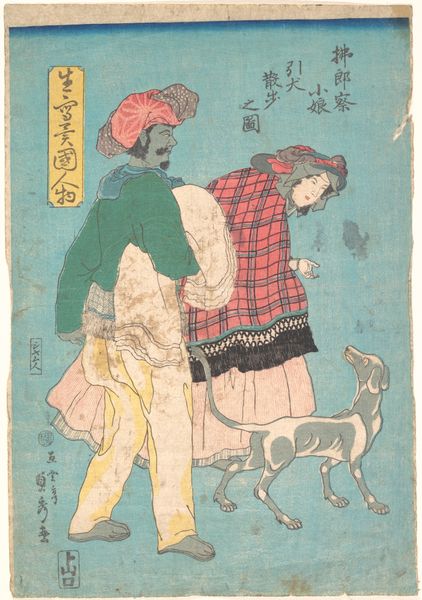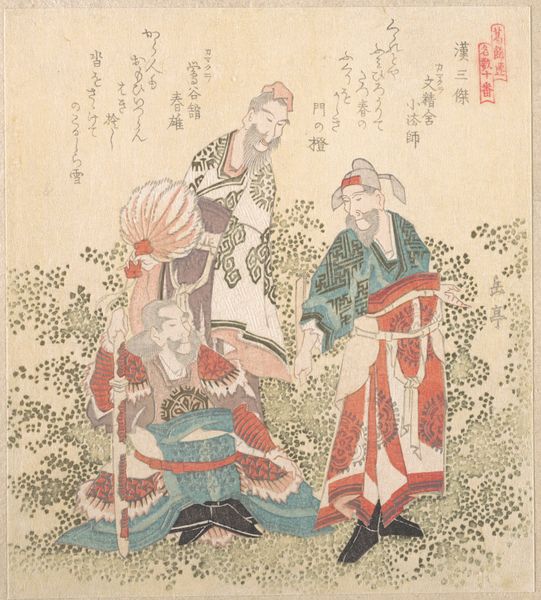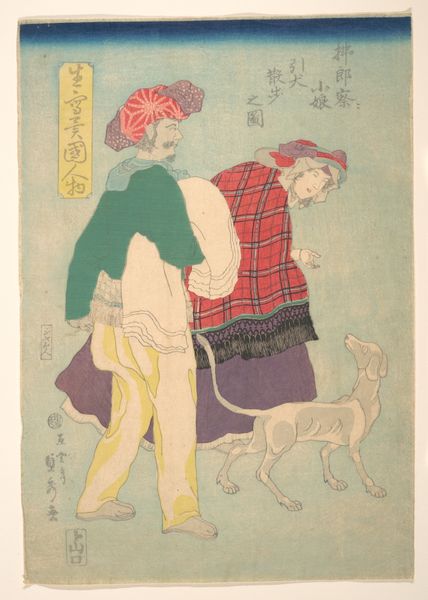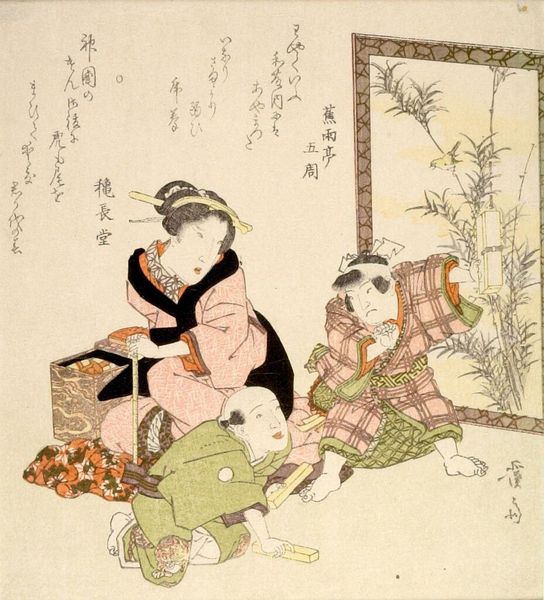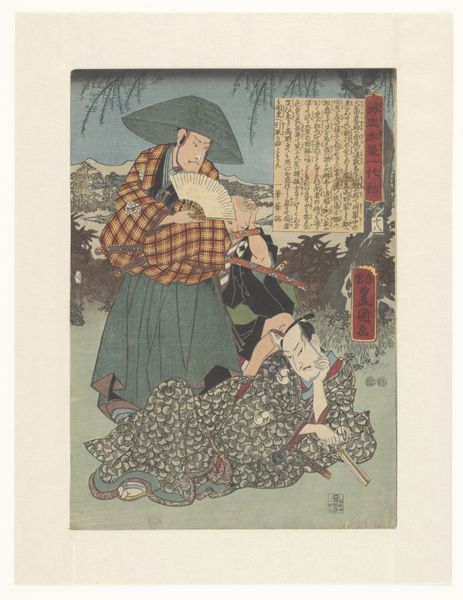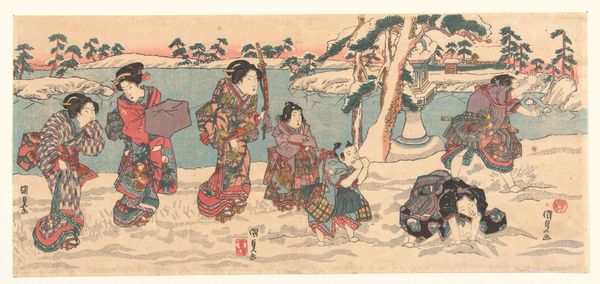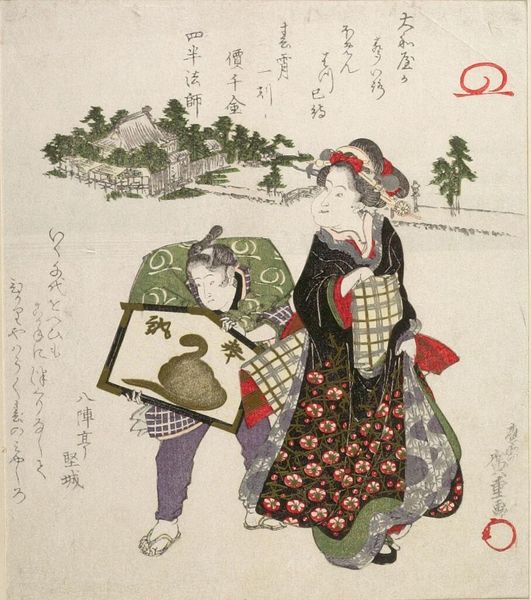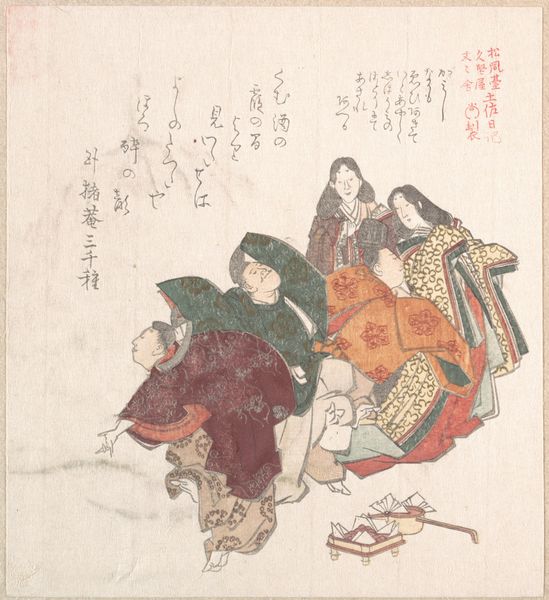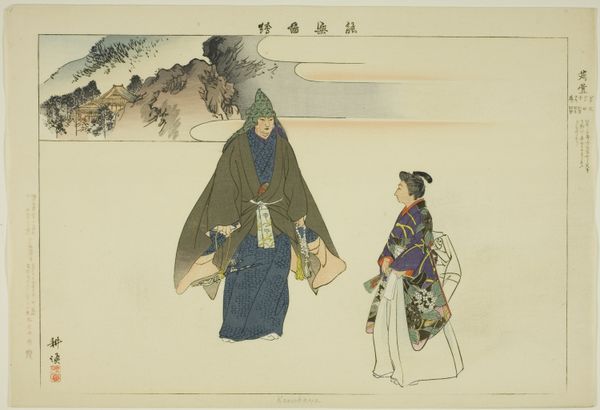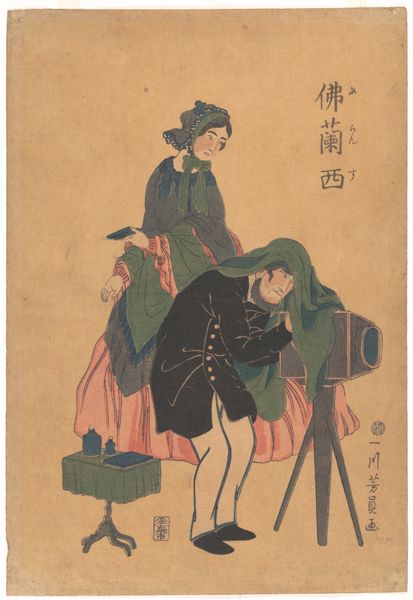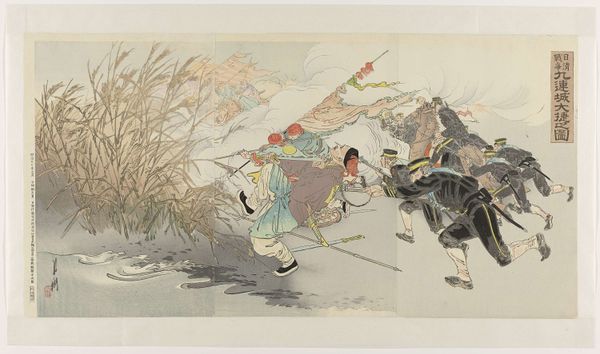
Copyright: Public Domain: Artvee
Editor: We’re looking at "Hide and Seek," a woodblock print created in 1897 by Helen Hyde. It features two children playing, rendered in gentle watercolor tones. There’s a quiet sweetness to it that I find quite charming. What's your take? What strikes you most about it? Curator: That sweetness sings to me, too. It whispers of fleeting childhood moments. Hyde, steeped in the Ukiyo-e tradition, paints more than just a genre scene, don’t you think? Those colours, that asymmetrical composition—it’s like glimpsing a half-remembered dream. Look at how the blossom gently drapes into the scene. It adds this…yearning quality, like spring itself holding its breath. Almost… fragile. Does that resonate with you? Editor: Definitely. I can see the connection to Ukiyo-e with the focus on everyday life, but that fragility hadn't quite struck me until now. It's a really subtle touch, isn’t it? Curator: It’s the soft exhale within a lively game, isn’t it? Think of those wooden shoes. In motion, yes. But with that… grounded weightiness. The dichotomy is perfect. It reminds me, personally, of being caught between imagination and reality as a child. Wonder if that was her intention, implicitly? Editor: It’s amazing how much depth can be captured in something that, on the surface, seems so simple. Thinking about it now, her blending of the real and imagined childhood worlds adds a new layer to the experience. Curator: Yes. And remember: art invites dialogue and deep emotion, without constraint or absolute knowing. I think Hyde invites just that. I will always consider this artist when discussing Asian art, in that context of openness and acceptance.
Comments
No comments
Be the first to comment and join the conversation on the ultimate creative platform.

